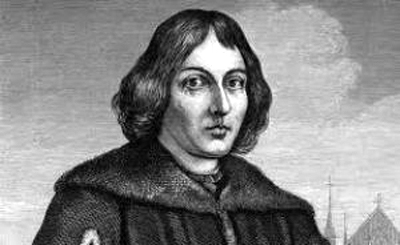Aristarchus was born in about the year 310 BC, probably on the Greek island of Samos, the same island that Pythagoras had been born on 260 years earlier. We know very little about Aristarchus’s life, but we know enough to be astounded by his science.
In Aristarchus’s day the geometric method was considered more important than numerical measurements. His premise 1 is reasonably accurate. Premise 2 overestimates the Moon’s angular diameter by a factor of four, which is puzzling, since this is an easy measurement to make.
(In a later publication, Aristarchus gave the angular size of the Moon as half a degree, which is about right, but he apparently did not modify his earlier work.) Premise 3 was probably not based on measurement but rather on an estimate; it is equivalent to assuming that the time from first quarter Moon to third quarter Moon is one day longer than the time from third quarter to first quarter.
The true angle between Sun and Moon at the time of quarter Moon is less than 90 degrees by only 9 minutes of arc—a quantity impossible to measure in antiquity.
Unlike quite a number of his contemporaries, Aristarchus of Samos never received much acclaim until modern times. To say this is despite his revolutionary ideas would be inaccurate. The truth is his beliefs probably did play a role in why he was ignored for so long.
At one time in human history, anyone who professed the belief that the earth revolved around the sun was disregarded due to religious theories at the time of antiquity. Based on what we know of the man, records indicate Aristarchus employed many modern geometric methods in formulas designed to measure celestial bodies.
Upon the arrival of a lunar eclipse, he was able to determine the radius of the moon and concluded it was 50% greater than the radius of the earth. This is not entirely accurate as the actual amount is 25% times larger.
Ancient authorities are unanimous in attributing the heliocentric theory to Aristarchus. Archimedes, who lived shortly afterward, says that he published his views in a book or treatise in which the premises that he developed led to the conclusion that the universe is many times greater than the current conception of it.

Archimedes, near the opening of The Sand-Reckoner, gives a summary statement of Aristarchus’ argument: His hypotheses are that the fixed stars and the sun are stationary, that the earth is borne in a circular orbit about the sun, which lies in the middle of its orbit, and that the sphere of the fixed stars, having the same center as the sun, is so great in extent that the circle on which he supposes the earth to be borne has such a proportion to the distance of the fixed stars as the center of the sphere bears to its surface.
After reporting Aristarchus’ views, Archimedes criticizes him for setting up a mathematically impossible proportion, pointing out that the center of the sphere has no magnitude and therefore cannot bear any ratio to the surface of the sphere.
Archimedes intrudes the observation that the “universe,” as it is commonly conceived of by astronomers, is a sphere whose radius extends from the center of the sun to the center of the earth.
Accordingly, as a mathematician he imputes to the mathematician Aristarchus a proportion that he feels is implicit in his statement, namely, that the ratio that the earth bears to the universe, as it is commonly conceived, is equal to the ratio that the sphere in which the earth revolves, in Aristarchus’ scheme, bears to the sphere of the fixed stars.
Aristarchus of Samos passed away circa 230 B.C. He was a figure who was far ahead of his time, but he did not get a great deal of recognition until recent times.